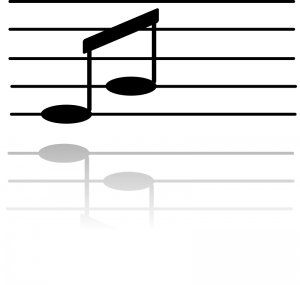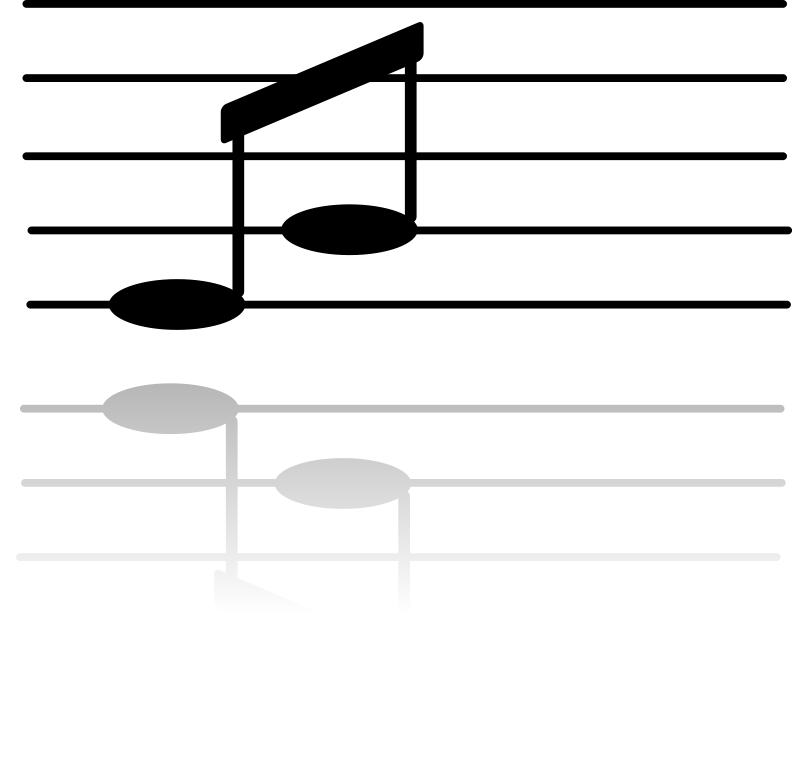 In the comment section of previous post, a reader asked for suggestions with helping a young student connect notes on the staff with their names and their corresponding piano key. I gave a response in the comment section, but thought I would share some of those thoughts with you all as a separate blog post!
In the comment section of previous post, a reader asked for suggestions with helping a young student connect notes on the staff with their names and their corresponding piano key. I gave a response in the comment section, but thought I would share some of those thoughts with you all as a separate blog post!
Sometimes, beginners (or even transfer students) seem to be missing a piece of the puzzle for understanding note-reading on the staff. Below is a description of how I would systematically try to figure out what is missing with a student who is struggling with note-reading!
I would first make sure the student can say the musical alphabet verbally forwards and backwards. This seems basic, but believe it or not, sometimes beginners miss this step, and then note reading makes little sense to them!
The next step is making sure the student knows the names of all the piano keys. My favorite thing to do is to ask them to find 3 C’s on the piano, and then 3 D’s (etc.). I also like using The Amazing Keyboard Race game.
Then, I would do some worksheets or activities making sure she sees the difference between line and space notes. I’ve had students think line notes mean the note is sitting “on” (meaning, between) the lines — which is actually what we call a space note. Knowing line and space notes is crucial to identifying intervals (steps versus skips) and to connecting the musical alphabet to seeing steps on the staff. (Also, make sure the student is looking at the note head in order to identify the note, rather than the stem.)
After that, choose a couple of notes on the staff to focus on, probably starting with Middle C. Give the student a sheet of large staff paper, and ask them to draw 5 Middle C’s as their theory assignment. The next week, have them draw D’s and Middle C’s. Continue in the same manner, gradually adding new notes. Whenever you practice quizzing notes on the staff, have the student first say the letter name of the note aloud, and then play that note on the piano immediately after. Instead of using flashcards, I now use the Music Flash Class app on my iPhone. It’s faster and easier — it lets you choose the range of notes to practice, and my phone is always near me when I teach.
That is the methodical progress I usually go through when I encounter a student who seems to be having trouble understanding something about the process of note-reading. I’m sure you can find worksheets and games that correspond to each step at some of the various websites and blogs that offer free music worksheets! I have a variety of resources listed on the Links page, if you need a place to get started.
Please share your tips about teaching successful note-reading in the comments below!



I am a beginning piano teacher and I found this post very helpful!! Thank you for your ideas.
Hi! I’m new to your blog and I’m finding it very interesting!
This is a good post on one of the things I find most fascinating about teaching young beginners – the many ways in which we make assumptions about what they know and the many MANY alternate ways they can interpret written notation. =)
I would like to add a few tips:
1. I like to be clear when introducing staff notation that each line or space on the staff represents a white key on our piano keyboard.
2. To help young ones understand line notes and space notes, we do a little tactile exercise where we pretend our heads are the note heads and we use our arms to make either horizontal “lines” above our heads and under our chins to make space notes, or “lines” with our fingertips at our ears to make line notes. We also practice space notes with only a line above our heads or below our chins, since the first space notes my students play are the D above Middle C and the B below Middle C. It gets their attention and there is usually some giggling, but they remember line and space notes!
3. Next we spend a week talking a a lot about NEIGHBORS. If letters are neighbors in the musical alphabet, they will be neighbors on your keyboard. They will also be neighbors on the staff: line to space or space to line. This is the specific key I have found to note reading success with many little ones – the connection between the alphabet and the staff. If the student guesses the name of the note stepping up from C as a G, she has not grasped this relationship with the alphabet. I’m glad you included saying the alphabet forwards AND backwards!
4. I really REALLY like the Perfect Start for Note Reading books by Kevin and Julia Olson, put out by FJH. They start with a handful of songs using just C and D, then C D E, then C and B, etc. Each are short (8 bars) and have cute lyrics and teacher duets.
5. Lastly, about 1 in 10 students are going to have troubles reading in the correct octave. For example the will read that the Bass Clef G is in fact a G, but they will play the G above Middle C. For these kiddos I go the extra step of teaching the number families. Yes, there are several Gs, but there is only 1 G3, for example. There are a couple approaches to number families, I use C4 as Middle C, but to each their own.
Hope this helps fill things out even more! I’m working up the nerve to start my own blog right now, so when I do I’ll post the link. =) Cheers!
Great tips! I might adjust the wording of #1, though, to be clear with students. It would be more accurate to say that the lines and spaces represent letters of the musical alphabet (versus saying it represents the white keys on the piano). Line and space notes represent black keys, too. I know many method books wait a long time to introduce sharps and flats (too long IMO), but I often teach them sooner than the book does. So many students learn to fear black keys and reading sharps and flats — but the concept is actually very simple. 🙂
Be sure to share your link when you get your blog up-and-running!
I love your space and line note game… I’m going to do this … Even with some of my older students… Lol
One thing I do to help make the connection between the notes on the staff and the notes on the piano is to vary how I use flashcards. Instead of just having them name the notes, I have them either 1) name the note and then play it on the piano or 2) just have them look at the flashcard and play the note on the piano.
Thanks for the helpful ideas!!
Definitely. I do the same thing!
Love your suggestions on note reading. How about advice on teaching 20 year old who plays a little by ear? I think it is so much harder to learn if you are used to playing by the way it sounds. They have a harder time reading notes!
If a student’s playing-by-ear skills are ahead of their reading skills, be sure to give them sight-reading that is appropriate for their level (i.e., 1 to 2 levels easier than their reading level, which may be 2 or more levels easier than their playing level!). I like using the old Bastien “A Line A Day” sight-reading books, but there are some great newer options out there as well, like the ones published by F.J.H. Of course, sometimes sight-reading books aren’t very exciting to students because the music is not always very appealing to the ear. Sometimes, it’s better just to use whatever books of supplemental music you have in your library.
Playing by ear isn’t a bad thing, so I would encourage and develop that skill with your student. But I would definitely try to catch-up their reading skills too, as it sounds like you are doing!
The I-phone flashcard app looks like such a great resource; however, I’m an appleless teacher. Anything comparable for android/kindle devices that anyone has had success with?
I don’t know anything about android/kindle apps, but I do know that Jennifer Eklund from Piano Pronto has reviewed some android music apps: http://pianopronto.com/blog/category/technology/android-apps-for-piano-teachers/
I play a flashcard game with my students called “Say and Play.” I show them a flashcard, they say the name of the note and then play it on the piano. If they are able to do both correctly, I hand them the flashcard. If they miss one or both parts, I keep the flashcard. Whoever has the most flashcards at the end is the “winner” – of course, I always make a BIG deal out of them having more flashcards than me and they love it!
I love this idea for a flashcard game! I’m going to use it at my group lesson this Friday!
Jane Calder has published 2 great books called “What’s That Note? Book 1 and 2” where each page is devoted to reading just a few notes in different rhythms and time signatures. This approach has been helpful for my students who get confused between treble and bass clefs, or who just need extra reinforcement on each note.
By the way-she has AWESOME games and other resources.
Here’s the link: http://www.makingmusicfun.com
I use Bea’s keys. They are piano key size flash cards that the students place directly on each key.
Love this post. I have had so many transfers that did not get the concept of intervallic reading. When they sit there and I can tell they are saying “every good boy…” I am excited to tell them there is an easier way. Sometimes this is still a very difficult transition. Especially with high school students…